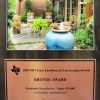Common Lawn care Mistakes to Avoid! Part 1
April 26, 2017 | By webadmin
Growing a new lawn or caring for an established one? There are common mistakes many homeowners, and even many maintenance crews, make when installing and maintaining lawns. Here are some of the most common ones to avoid.
Skipping the soil prep:
Before putting in a new lawn, you’ll need to prepare the soil before laying down the new sod. One of the reasons that some turf can struggle here is due to our heavy clay soil. Before investing the time and money, it's critical to loosen it up and blend in some organic matter in the form of compost. This fluffier mixture will be much more inviting to the delicate roots of new sod as well as to existing grass runners.

Forgetting to water in winter
It's not uncommon for lawns in our region to suffer winter damage. But, you can significantly decrease these losses by paying attention to weather patterns and giving the landscape a good soak between winter rains. If lawns have been excessively dry, and we have a hard freeze, you can lose large sections of your lawn. Winter in Texas often brings periods of drought and it’s easy to forget you need to water your lawn and landscape now and then. Mark it on your calendar or add a reminder on your phone to water deeply at least once a month when we don't receive rain.
Overwatering in winter.
You can also kill portions of your lawn by over-watering it in winter. Our heavy clay soils can hold excess moisture - cool soil temperatures and wet feet are not a good combination for most lawn grasses. Be sure to adjust your sprinkler schedule down from your summer watering levels for winter temperatures.
Disregarding lawn species
Each type of grass has it's own care needs and it's essential to know which one you have in order to treat it properly. The most common types we see in the Dallas-Ft. Worth area are St. Augustine, Bermuda and Zoysia. Bermuda looks best and is most healthy when cut more frequently and kept at a height of one- to two-inches. St Augustine prefers a mowing height of two- to three-inches. Mowing your St. Augustine too low will weaken your lawn, making it more susceptible to pests and disease. Each also responds differently to temperature and moisture levels. Knowing these differences will influence the health of your lawn.
Blending St. Augustine with Bermuda
Because Bermuda seed is available inexpensively at home and garden centers, it's tempting to throw some down on bare spots in your lawn. Unless you already have a full lawn of Bermuda, this is not a good idea. The two grasses look completely different so the Bermuda patches will stand out; not to mention, the Bermuda will eventually overtake all of your St. Augustine in sunny areas.
Bagging your clippings
Many mowers these days have a mulching screen which blocks the clippings from spraying out onto the lawn and throws them back toward the blade to be chopped into smaller pieces that decompose in short order and feed the soil. Bagging and trashing this free source of nitrogen-filled organic matter is a waste of time and energy. If your mower doesn't have the mulching screen, simply run over the clippings once more, if they are too thick to quickly break down.
Whether you are a DIY’er or have a maintenance crew caring for your lawn, understanding the nuances of how lawns grow will increase the success of how healthy and beautiful your grass grows.
